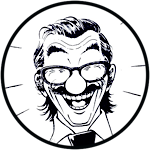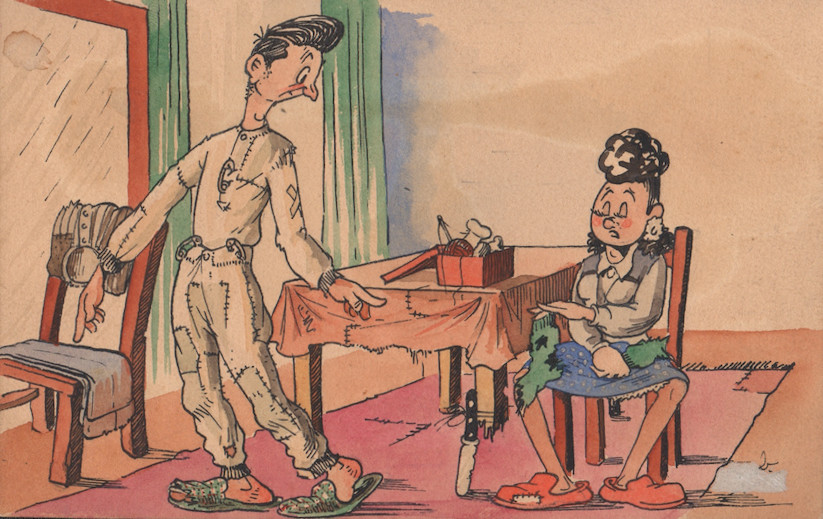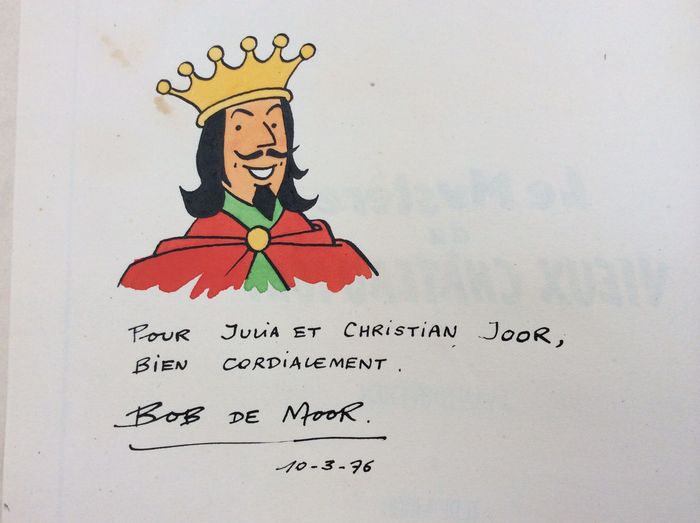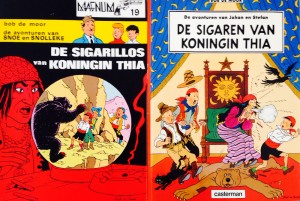
Today you’ll see a very good example of how an album in the Oncle Zigomar series got rewritten, renamed, partially redrawn, and a bit brutalized (for the dutch market?). Victim of today is the album “De sigarillo’s van Koningin Thia” (Eng: The cigarillos of Queen Thia) which was published from 26 March 26 1952 till 18 July 1952 in the newspaper De Nieuwe Gids and related titles.
The story was the 3rd in the newspaper and also the 3rd to be published in the Magnum series 27 years later, in 1979 as edited by Danny De Laet (a name you’ll often hear back when it comes to Bob De Moor and related flemish comic artists such as recently deceased POM) and published by De Dageraad. In this black and white version it’s clear that they took the drawings from the newspaper edition strips since the reproductions have the typical unclear newspaper print as you can see on the left. Also noticeable is that in this version Oncle Zigomar is still called ‘Nonkel Zigomar’ in dutch (or rather the Antwerp version of it…).
But when Casterman would re-release the album in 1990 a few things would change. As we already told you in the article on the album “The red caballero” some refreshing work had been done. In the case of this album this also meant an update of the album title which was changed into “De sigaren van Koningin Thia” (Eng: The cigars of Queen Thia). Also the artwork for the cover was completely changed as you can see next to the change from ‘De avonturen van Snoe en Snolleke’ to ‘De avonturen van Johan en Stefan’.
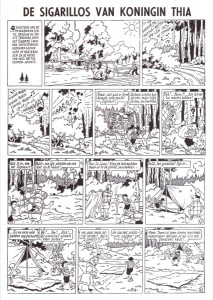
But where the refreshing went a bit too far is with the ‘dutchified’ text. No trace of Oncle Zigomar because the new name for Oncle Zigomar was now ‘Oom Watje‘, english for ‘Softy’. It’s unclear whether this was a change to get more access on the Dutch market, but it sure wasn’t a change that was well received on the flemish side of the dutch speaking public (the text in the balloons was done by the Dutch Frits Jonker, but it’s far from sure if he also did the translation). ‘Watje’ for sure is not a word that flemish use a lot and the name actually changes the character of Oncle Zigomar into a rather pejorative way, ‘Watje’ being the word used for a person who doesn’t know how to handle things, someone who is lame, weak. And if there is one thing that is sure, it’s that Oncle Zigomar is not a weak character at all. It’s rather weird that Bob De Moor accepted this change (and we’ll get back on this matter). The same horrible – and for flemish readers completely incomprehensible linguistically – ‘corrections’ happened with more words and phrases throughout the album. ‘Tentstokken’ became ‘haringen’ etc.. I even had to look it up the first time I read this album 25 years ago, thinking they were to go and grill fish instead. And it goes on and on. Without joking, as a flemish reader you need a dictionary to understand every word.
Note also that the Tintin albums in the iPhone and iPad app underwent the same horrible treatment alienating the normal neutral dutch from the early days into a dutch that holds way too many phrases and words which feel very weird to flemish readers (in Flanders we for instance will never use the typical dutch word ‘nou’). A pity and somewhat weird that this happened.
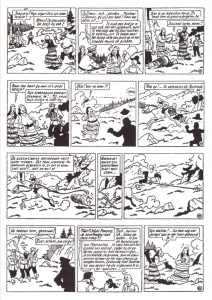
So, now that we have that of our chest, let’s look for more changes that happened in this album. In the Casterman version the daily strip numbering has been removed and changed to the actual page numbering. Casterman also used the actual drawings instead of the newspaper strips, so the quality of the drawings is much cleaner and complete (the newspaper strips tended to lose the borders every now and then). Casterman also added the strips 9, 10, 11 and 12 which were missing from the original Magnum edition. But as a result this meant that the Casterman edition would have 49 pages instead, which was not possible.
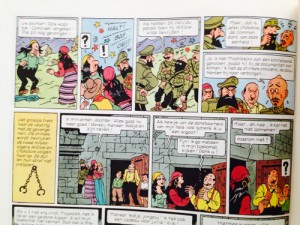
The solution was to adapt the last 3 pages into 2 pages instead. The last strip of page 46 from the Magnum release got recut and partially redrawn. As a result you can see that the first case in the last strip on that page, number 188, got cut on the right after which 3 new cases were inserted. As a result the scene in which Jefski Moesorg saved Madroshkake disappeared and the discovery of the identity of the hooded horserider (Jefski Moesorg) was moved to the last page instead. On that last page the first strip was cut away and changed by 5 new cases. Note that the names of these characters also changed respectively to Jefski Chokotow and Madrotskja. While De Moor (or was it Geert De Sutter who changed this detail) was at it, he also changed the eyes and the lips of the princess to give them a sexier touch. Mission accomplished.
So thanks to Casterman we get the missing page back in the story but we lose the 3 last pages which were recut and redrawn into 2. To enjoy the story at max it’s recommended to have both versions, especially for the language which is so much richer in the original version.
We’ll get back on this when we publish the Geert De Sutter interview.
